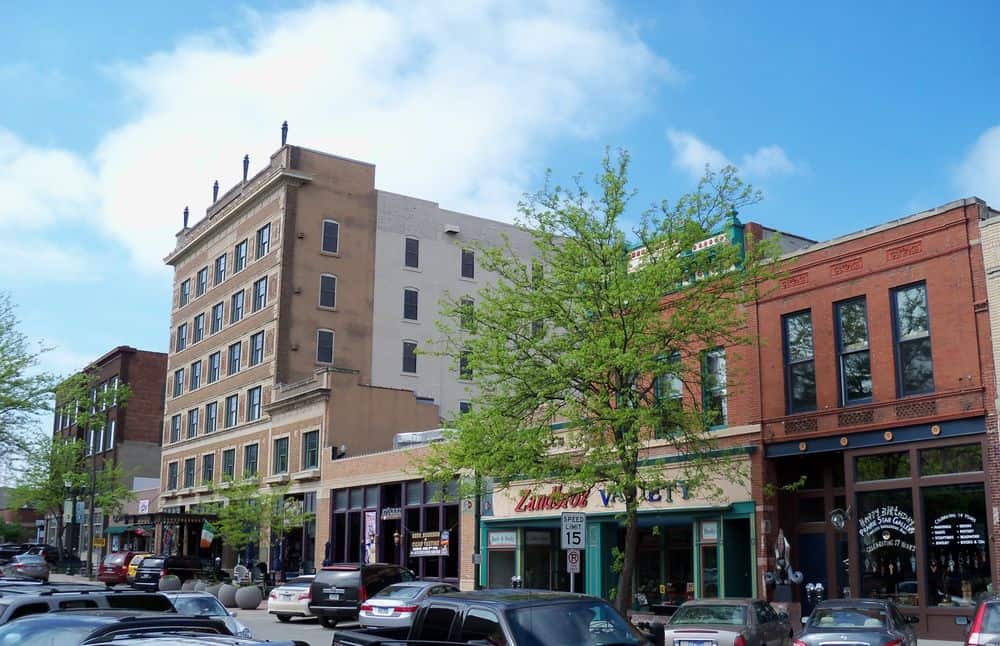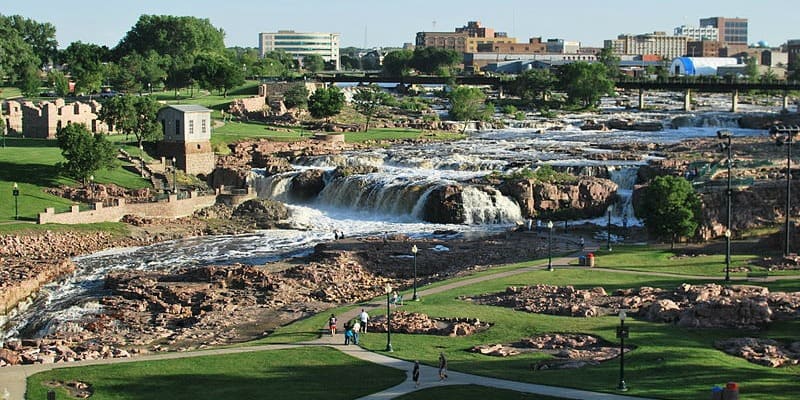The origins of Sioux Falls is largely associated with the Big Sioux River. The falls were established around 14,000 years ago after the detouring of river’s flow from the glacial ice sheet, creating large bends of its current course. The early residents left burial mounds close to the river, while an agricultural community built fortified cities in the region.
Early Explorations
The gorgeous falls attracted many early explorers to the place. ‘Soues River’ was the account of the Lewis and Clark expedition which described the falls with grace. More descriptions were made about the fall by Joseph Nicollet and John C. Fremont when they surveyed the region in 1838.
Great land speculation happened in the area around the Big Sioux River in the mid-1850s. Land investors created Sioux Falls, SD with the vision of making money by acquiring chief sites before the arrival of residents and railroads in the region.
Business Development
In order to acquire the land surrounding the falls, The Western Town Company and The Dakota Land Company were established in the year 1856. The two ventures together joined forces with a vision of providing mutual protection, laying out 320-acre claims. It was crucial to protect the companies from native tribes and potential threats, so they built a temporary barricade.
Dakota War and Fort Dakota Military Reservation
Almost the whole of Southwestern Minnesota was consumed by the Dakota War of 1862. Two residents of the town died due to a conflict in August of the same year, and henceforth, the town was emptied. The soldiers, as well as the residents living in the area, shifted to Yankton, while the evacuation was followed by plundering and burning the town of Sioux Falls.
A military reservation called Fort Dakota was developed in May 1865, followed by the return of many past residents to the town. In fact, new residents also came to the city after a few years, witnessing an increase in the population to over 500 by 1873.
It was the year 1876 that Sioux Falls was incorporated, but the charter seemed to be very restrictive. The town of Sioux Falls then applied to be termed as a city, followed by The Dakota Territorial legislature granting the city charter in the year 1883.
Dakota Boom
After the arrival of the railroads in the region, the 1880s witnessed the great Dakota Boom in the city. The population of Sioux Falls experienced a peak and crossed over 10,000 in the 1880s, which in turn, put a huge impact on the city. A severe grasshopper plague and the national depression became the root cause of stopping the developments in the early 1890s.
Faster Growth
The fact that it was easy to acquire a legal divorce in Dakota territory became news that spread like wildfire. This further made Sioux Falls and Fargo to get termed as the ‘divorce capitals’, having a large number of people coming to the city to look for a divorce. This proved to be a boon for the city’s growth as the surge of visitors in lead to the establishment of new restaurants and hotels. The development continued for around 100 years and came to a halt only in the early 1990s.
A steady pace of growth began in Sioux Falls after the establishment of the John Morell meat-packing plant in 1909. The initial years of the 20th century witnessed growth in Sioux Falls at a faster pace as compared to the previous years.


